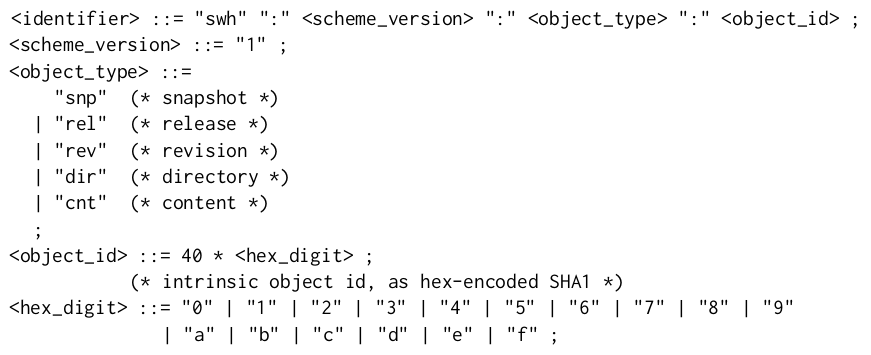
swh-snd is an sound art experiment on top of Software Heritage archive.
http://swh-snd.4two.art
This project aims to investigate the software evolution throught the combination between data sonification and data visualization with approach experimental (not as in scientific experiment) and artistic.
The strategy of investigation takes inspiration from Paul Feyerabend:
The only principle that does not inhibit progress is: anything goes (Feyerabend 1975).
Requires Pandoc 2.17.1.1 or later and citeproc.
make index.htmlTo build the pdf version.
make paper.pdfDownload paper.pdf
Does data sonification combined with data visualization can enrich software evolution understanding?
TODO (SUBER 1988).
Software Heritage is … building the universal software archive, the project collect and preserve software in source code form, the archive is accessible … because only by sharing it we can guarantee its preservation in the very long term

SWDID (Cosmo, Gruenpeter, and Zacchiroli 2018).
TODO: https://www.softwareheritage.org/mirrors/
TODO
How does the rate of swhid adoption has been evolving?
TODO
Sonification isn’t Data Sonification, sonification is the practical use of sound to solve a question.
TODO (Kaper, Tipei, and Wiebel 2000).
TODO (Mancino and Scanniello 2017; Andrade 2014).
TODO
draft: Fetch the source code of N versions for a software project X from SWH Extract source code metrics for each version of each project, Or fetch source code metrics from some API if available.